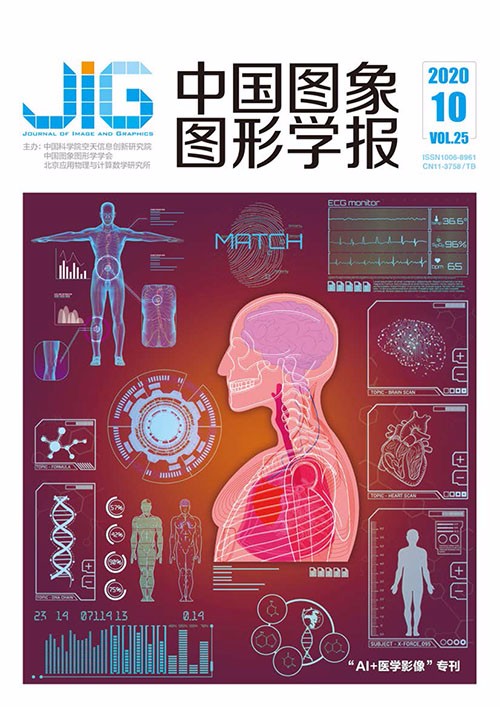
4D时空纵向分析在生物医学领域中的应用现状与趋势
摘 要
随着成像技术的成熟,临床医生及实验人员能获得同时带有时间和空间信息的4D(3D+时间)数据,用于纵向研究疾病变化情况。由于缺乏合适的处理算法,导致明显的信息丢失。为解决这一问题,一些研究发挥人工智能在海量数据处理上的优势进行纵向医学图像分析,研究目标随时间的动态变化。本文对4D时空纵向分析在生物学运动目标追踪、医学影像分割、肿瘤生长预测、血管动力学和神经科学等应用进行综述,重点探讨了人工智能技术与传统分析方法在各应用场景的优劣,并从联合多模态异构数据进行关联分析及联邦学习辅助算法部署两个角度进行前瞻性的探索和可行性分析,突破2D影像处理瓶颈,推动4D设备广泛应用,并为未来时空纵向分析在生物医学领域中的方法学研究及应用场景探索提供思路。
关键词
Research status and trend of 4D spatiotemporal longitudinal analysis in biomedical field
Xu Chunyuan, Zeng Xiaotian, Song Zeyu, Tang Xiaoying(Laboratory of Medical Engineering and Information Technology, School of Life Science, Beijing Institute of Technology, Beijing 100081, China) Abstract
Clinicians and experimenters can obtain a time series of three-dimensional images in a fixed time period, that is, 4D (3D + time) longitudinal data with both time and space information, such as two-photon microscopy, CT/MRI(computer tomography/magnetic resonance imaging) Cine scanning mode, or artificially select a time point to scan, and use 4D tensor representation to integrate the collected data in one time and three spatial dimensions, which is suitable for longitudinal analysis. Longitudinal analysis describes the collection of data on one or more variables of the same object at multiple time points to study their changes over time or a set of diachronic research methods that track the influence of some variables, which are commonly used in the medical field: disease changes and causes. However, many studies in the past sliced 4D data into 2D/3D pictures due to the lack of suitable processing algorithms, resulting in significant information loss. In recent years, artificial intelligence has given full play to its natural advantages in massive data processing and has brought new solutions to solve the problems of 4D longitudinal data with high dimensions, large amount of calculation, and difficulty in analysis. Among the solutions, convolutional neural networks, long- and short-term memory networks, and other deep learning algorithms have achieved good results in the processing of different modalities, such as natural language, audio, image, and video. They have exceeded the traditional methods. In the longitudinal medical image analysis using 4D data, deep learning uses spatial information and time-varying information and plays an important role in studying the dynamic changes of goals over time. The main application directions can be divided into two categories: moving target tracking and positioning in the field of biomedicine and tumor growth prediction and auxiliary diagnosis, where moving target tracking and positioning includes matching between complex moving targets in the biological field, 4D longitudinal medical imaging, automatic data segmentation, and vascular dynamics research. Tumor growth prediction and auxiliary diagnosis use volume longitudinal data with time information to model tumor growth, calculate the change in tumor size over a period of time, that is, the growth characteristics of the tumor, and assist the doctor in the diagnostic stage from the perspective of growth rate (benign tumors generally grow slower than malignant tumors). Cancer grades are recommended for patients to review. During the treatment phase, tumor changes are accurately measured; the effects of radiotherapy or drug treatment are evaluated; survival is predicted; personalized treatment plans for patients are developed, and drug development is promoted. However, the abovementioned longitudinal analysis only focuses on the change of the macroscopic morphology of the lesion and cannot reflect all tumor biological information or predict the clinically relevant tumor properties. In the future, horizontal correlation analysis can include temporal features, capture the relationship between temporal and spatial changes, and map the quantitative values of molecular features to histopathological changes, thereby proving the relationship between the secretion of cytokines and the severity of lesions in the image relevance to explain the causality of the disease from the table and achieve personalized treatment. In addition, the accuracy and generalization of the abovementioned artificial intelligence algorithms depend on large-scale and high-quality data. Medical data have fewer samples, larger acquisition costs, and higher resolution requirements than data in other fields. Problem and longitudinal data make data collection difficult because they contain time information not previously involved. Future medical longitudinal data points can be combined with federal learning and transfer learning: federal learning is used to ensure that no data exchange is observed while improving the generalization of the model, making the same model suitable for data from other hospitals, and protecting the privacy of medical data. On the contrary, transfer learning is used to solve the problem of few high-quality samples and the lack of frame-by-frame labels, improve the accuracy of the model, and solve hidden security risks such as user privacy when the product is launched in the future.
Keywords
|



 中国图象图形学报 │ 京ICP备05080539号-4 │ 本系统由
中国图象图形学报 │ 京ICP备05080539号-4 │ 本系统由